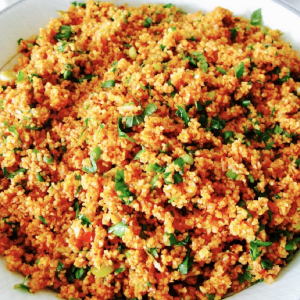Turkey has been called the hub of the east; home of the traditional boundary between Europe and Asia (Istanbul), and sandwiched between the Mediterranean and Black Seas. It can also claim culinary influence over most of its neighbours by virtue of 600 years of Ottoman imperialism…
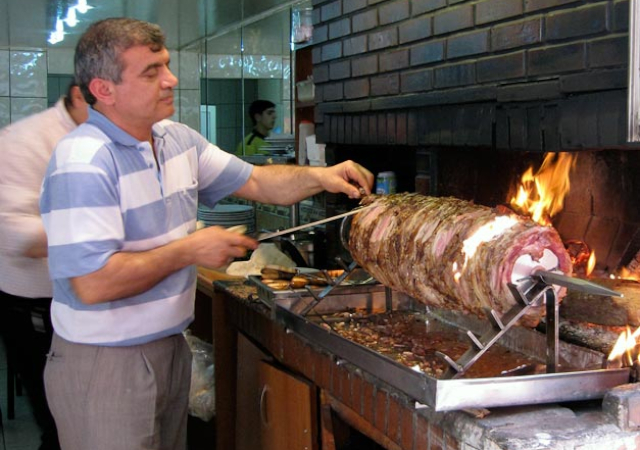 Cag Kebab: Horizontal shawarma with a classic Turkish marinade…
Cag Kebab: Horizontal shawarma with a classic Turkish marinade…
Istanbul is held by many to be a unique, almost magical place; half in Europe and half in Asia, divided only by the narrow Strait of Bosporus. The country’s cuisine is as diverse as its history.
According to tooistanbul.com: “Turkish cuisine is […] considered as the third richest cuisine after the French and the Chinese gastronomy. […] Because of six centuries of Ottoman regional domination and the reciprocal influence between Turkey and its neighboring countries (Greece, Bulgaria, The Balkans, Iraq, Syria, Iran, Armenia…) is the reason why we find so many common dishes in those cuisines such as dolma, börek, kebab, mantı (Turkish ravioli), and so on.”
But we want to explore some of the lesser-known Turkish dishes that make the country’s cuisine unique.
On our menu today
Kofte: Turkish for ‘balls’. Found in many varieties depending on the region in which you dine, Kofte may actually contain various meats or appear in vegetarian form. In fact, vegetarian Mercimek Kofte is one of the most popular Turkish appetizers and sides. Based on red lentils and finely milled Bulgar Wheat, the little gems are flavoured with onions and scallions, tomatoes and hot red pepper paste, and cilantro. Usually served rolled up into a lettuce leaf with a squeeze of lemon.
Inegol kofte: A classic Turkish meatball, this popular delicacy is made simply, from ground beef or lamb, bread crumbs, onions and spices.
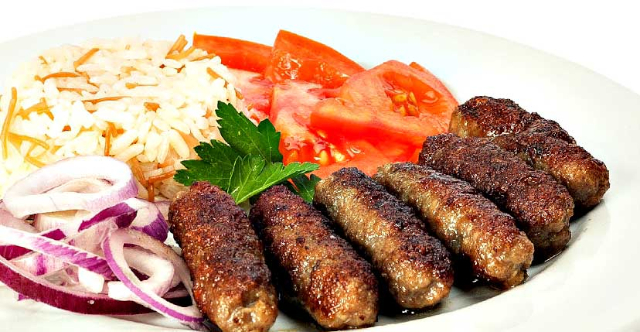
Less like balls and more like little straight sausage segments, Inegol kofte are usually served with traditional Turkish sides or wrapped in a flatbread.
Piyaz: Turks prize their small, tender butter beans known as Candir. They’re most often enjoyed in Piyaz, an amazingly popular salad, combined with tahini, lemon juice, vinegar, salt, garlic, olive oil and parsley. The strictly traditional version also features a hard-boiloed egg, chopped and folded gently into the mix.
Kisir: More a style of dish than a specific recipe, this bulgar-based side is found all over Turkey. It usually contains tomatoes, garlic, parsley and mint. In the south, they add hot pepper flakes. If you hadn’t guessed by now, bulgar wheat us a key ingredient in many Turkish culinary classics.
Zeytinyagli Yemegi: This is a catch-all name for the vast menu of Turkish cooked-vegetable dishes. It literally means, ‘foods cooked in olive oil’. Most are based on green beans, artichokes or eggplant.
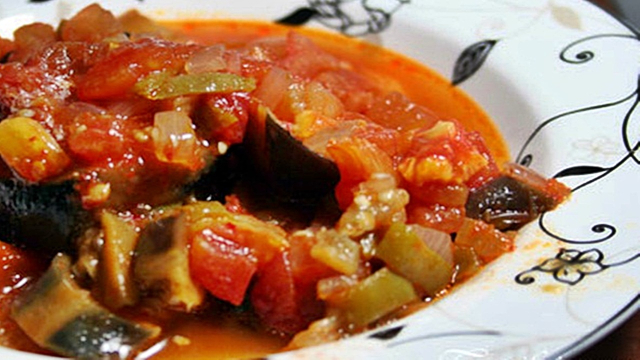
Among the the multitude, Sasuka (an eggplant variation) stands out. It features zucchini, garlic, tomatoes and hot peppers. Like bulgar, eggplant turns up in many classic Turkish dishes.
Cag Kebab: You’ll immediately note the similarity between this dish and the Doners found across the upper Middle East and the Balkans. But it differs significantly in that it’s roasted on a horizontal spit (rather than the familiar Middle eastern vertical rotisserie) and the lamb marinates in a rub of onions, salt and pepper for 8-12 hours before it’s stacked on the spit and put on the fire. Like its descendant, the Shawarma, Cag Kebab is usually served wrapped in a pita-like Lavas flatbread, onions, bread, garnished with tomatoes, onions and green peppers.
Lahmacun: Dating back more than 300 years, this ‘Turkish Pizza’ is made on a thin, tortilla-like crust, topped with a signature mix of finely minced meat, tomato paste, garlic and spices.
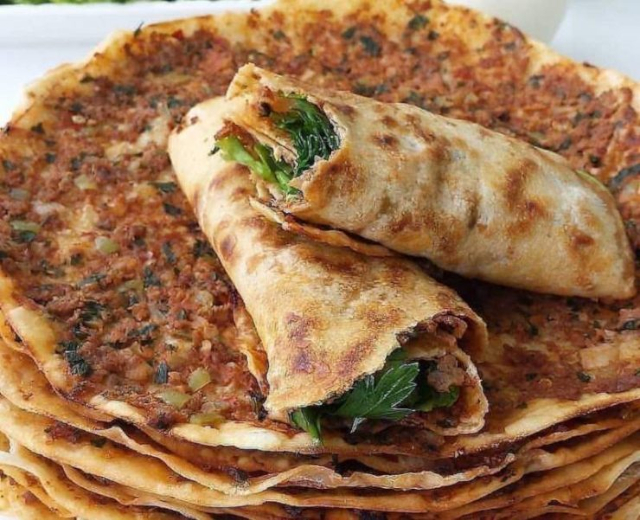
In its simplest form, Lahmacun is served with a sprinkle of fresh parsley and a squeeze of lemon juice and rolled up for convenient grab-and-go consumption. But it can also come stuffed with a variety of ingredients – just like the Pizza we know and love.
The Turks are also crazy about another version of ‘Pizza’: Pide is a thicker layer of dough shaped by hand into an oval with pointed ends, and topped with sausage, eggs and cheese.
Manti: These ubiquitous dumplings are commonly referred to ‘Turkish Ravioli’. They’re small pasta packets filled with minced meat (mixed with herbs and spices) or, more popularly, with cheese. They’re cooked in boiling water like ravioli, but topped with yogurt and hot pepper flakes.
Notable specialties…
Finally, a couple of classic Turkish specialties with very special meaning…
Perde Pilav: This oven-baked rice pie is always served at weddings and is said to symbolize the creation of a new home.
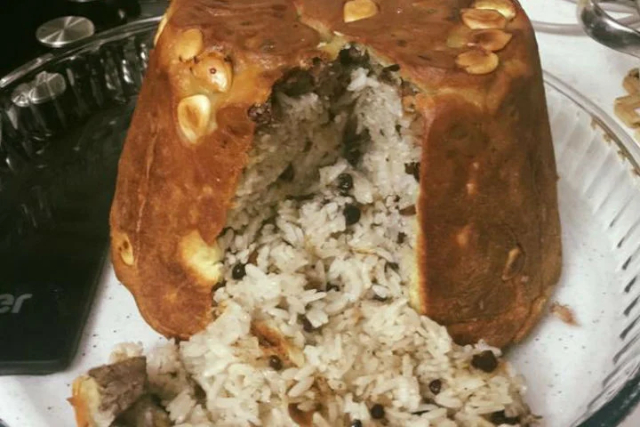
Shaped like a truncated cone, the Pilavs are wrapped in delicate pastry, and consist of rice, chicken, currants, almonds, pine nuts, butter, oregano and pepper. The rice stands for fertility and currents represent future children.
Ezogelin Corba: Literally, ‘Bride Ezo’s Soup’, this unique dish is said to have invented by a young bride who was trying to impress her new mother-in-law. It’s a relatively simple recipe based on red lentils combined with tomato paste, fresh tomatoes and onions, and garnished with hot pepper flakes and mint. Even after hundreds of years, it remains a menu favourite for brides to be.
Afiyet olsun! (Enjoy the meal!)
That’s our very brief tour of the most popular Turkish mains and sides. There are literally hundreds of basic dishes and thousands of variations, depending on where in the country you’re stopping for sustenance. Tomorrow, we’ll explore the world of Turkish breads, some of which you won’t find anywhere else!
~ Maggie J.

